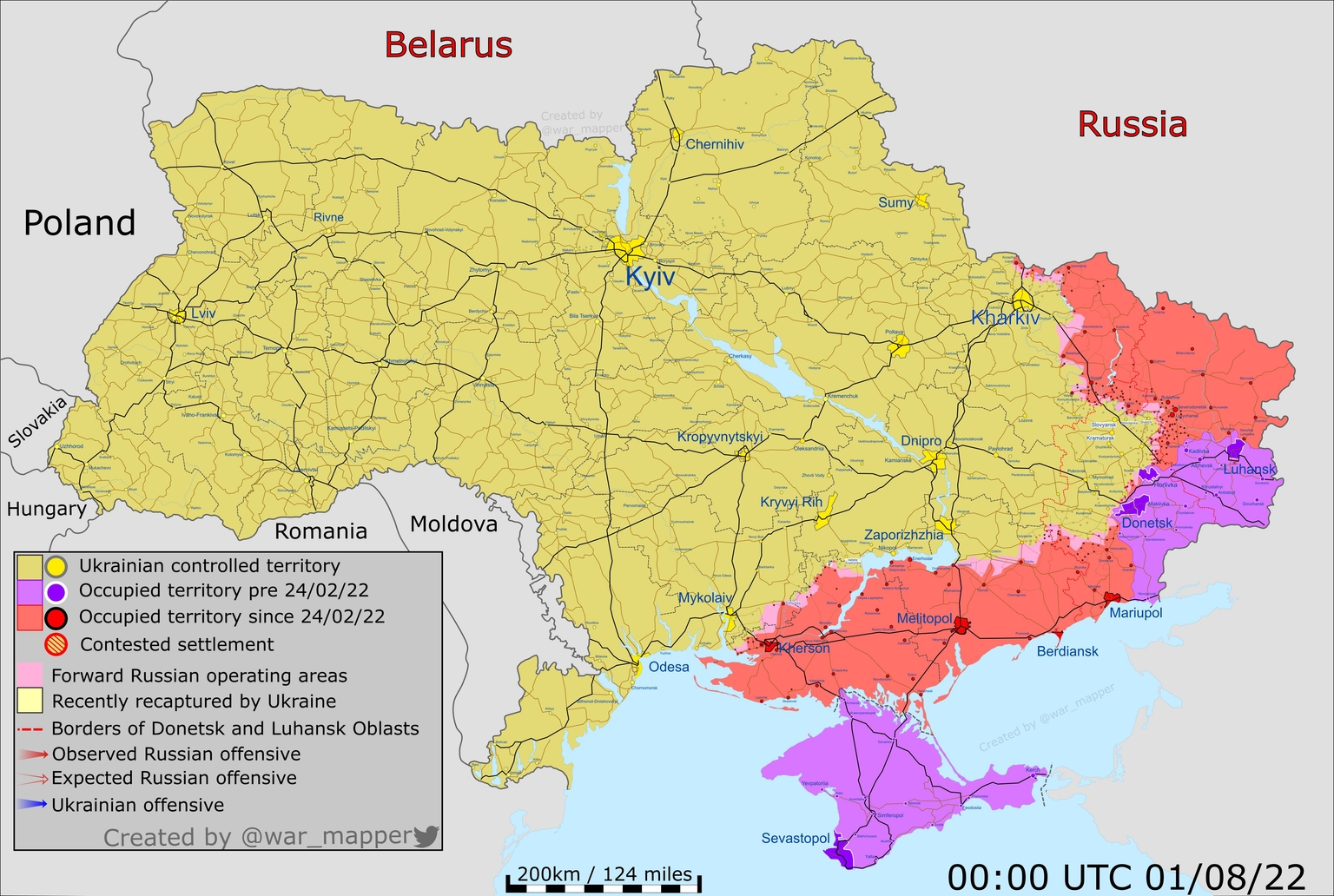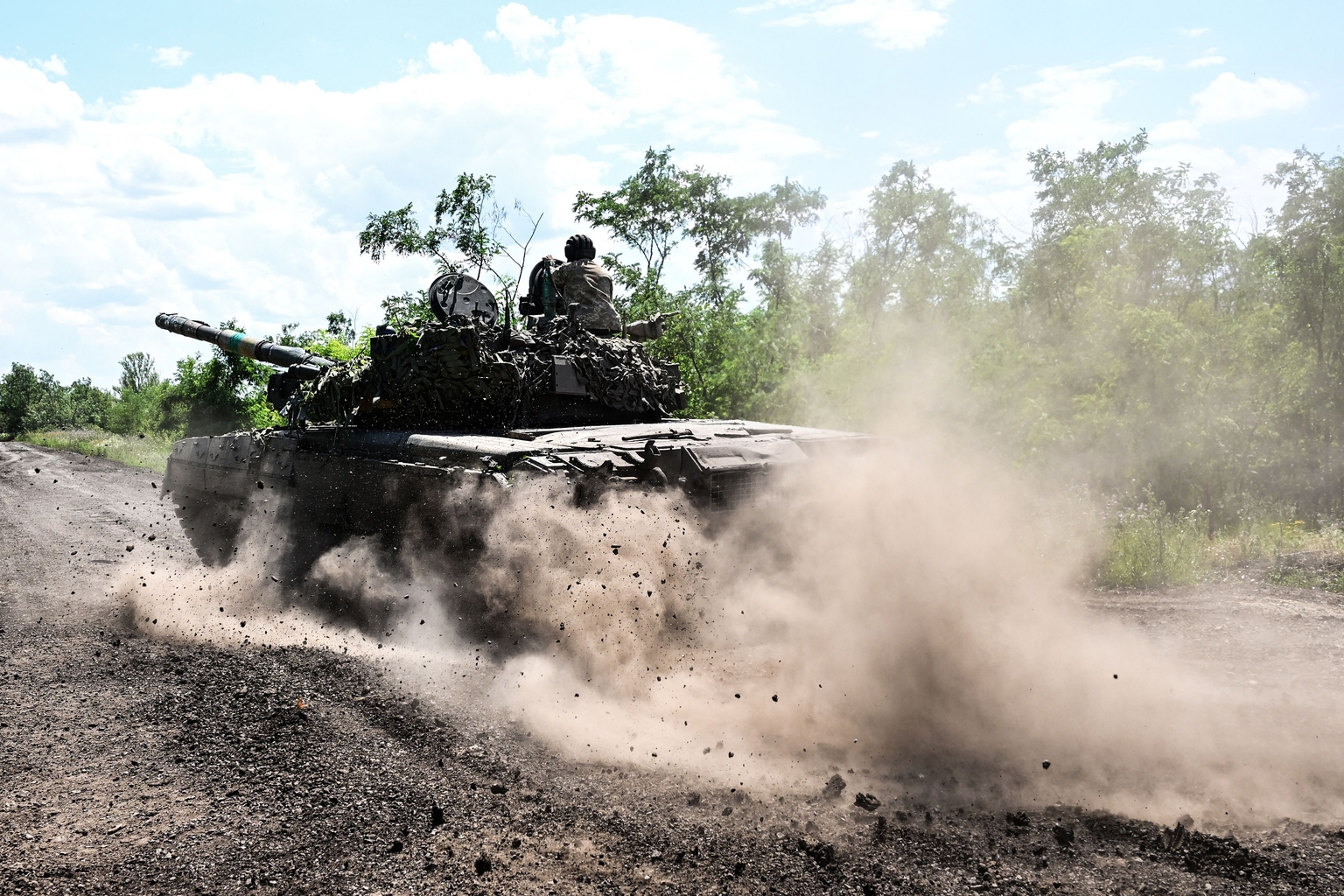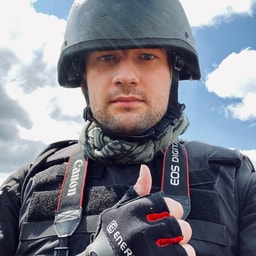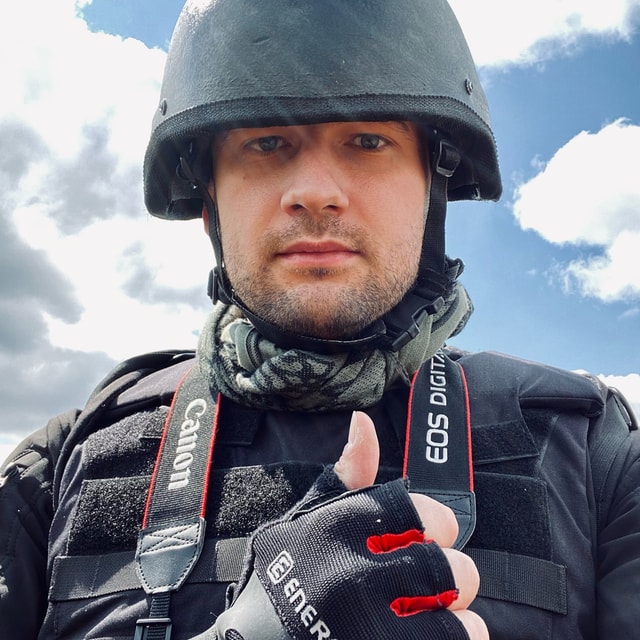Battle to end the war: Ukraine's chance to get edge over Russia

The third phase of Russia's war on Ukraine is coming.
The first, the Kremlin's brazen blitzkrieg in late February that culminated in the Battle of Kyiv, failed. The months-long Battle of Donbas in Ukraine’s east making up the second phase has gotten bogged down, with Russia having barely enough strength to complete the region's capture.
The war's focus has now pivoted to the south.
After over five months of its full-out war, Russia is employing close to 100% of its conventional military power against Ukraine, with only limited results to show for it.
Russia is steadily losing military power as the country struggles to generate high-quality reserves. It has spent the last month refraining from large-scale operations in Donbas and elsewhere, trying to recover from previous battles.
For Ukraine, this hiatus is a window of opportunity.
While Russia is still coming around, Ukraine's military has the chance to deliver a decisive strike that would allow it to gain an edge over Russia and define the course of the rest of the war. In other words, this could be the war’s turning point.
This third phase could determine the rest of the war. If successful, it could lead to a fourth phase in which Ukraine defeats Russia.
The Kremlin clearly understands the stakes. It is urgently redeploying much of its forces from Donbas to Ukraine’s south, where its positions are the most vulnerable.
The next few months will define the war's outcome, the majority of experts believe.
Limited results
While the fighting in Ukraine's east has been raging since the first day of Russia’s full-scale invasion, the region became Russia’s primary focus during the war's phase two, the Battle of Donbas, which started mid-April.
Months later, Russia had nearly 78% of Donetsk and Luhansk oblasts under its control, the full seizure of which was repeatedly stated as the new campaign's main goal. However, it had already occupied a total of 30% of the two regions' territory since Russia’s invasion of 2014-2015.
And this is despite the fact that at the height of the Battle of Donbas, Russia had concentrated close to 65% of its overall military power in Ukraine in northern Donbas.
Read also: Escaping forced conscription in Russian-occupied Donetsk
It's been nearly a month since Russia, following more than 60 days of fighting, finally seized Sievierodonetsk and Lysychansk, the twin cities of Luhansk Oblast, in late June and early July. For the next month, Russian forces took "an operational pause" to restore their severely depleted units.
Experts polled by the Kyiv Independent agree that Russia paid an unreasonably heavy price for their gains in the Battle of Donbas.

The "pause" continued pretty much until the end of July. During this time, Russia managed to make just tactical gains close to Bakhmut in Donetsk Oblast, such as the capture of the defunct Vuhlehirska power plant by Wagner mercenaries on July 26.
As the Institute for the Study of War (ISW), a U.S.-based think tank, said on July 27, the Russian military was capable of sustaining just two significant offensive operations against the cities of Bakhmut and Siversk, respectively.
Other than that, the ISW added, Russia had been unable to sustain "a similar offensive operational tempo or to make similar territorial gains elsewhere in Ukraine.” The think tank believes Russia's protracted offensive in Donbas will likely culminate before seizing any other major urban areas in Ukraine.
Read also: As Ukraine withdraws from Sievierodonetsk, Battle of Donbas enters next phase
A Russian force of up to 150,000 soldiers is still not enough for all that the Kremlin wants in Ukraine.
Experts believe that Russia made the strategic mistake of dispersing its limited strike force across several axes in Ukraine instead of just one. It had to give up on Kyiv and northern Ukraine and in not withdrawing from the south, Russia was forced to commit a lot of military power at the expense of its offensives in Donbas.
"And thus they fall short of the strength to get 100% results," said Andriy Zagorodniuk, a former Ukrainian defense minister and currently the head of the Kyiv-based Center for Defense Strategies.
"And we can see that after success in Luhansk Oblast, they're finding it hard to consolidate their gains in Donetsk Oblast. We have spoken to many analysts, including our American colleagues, and most of them have doubts about Russia's ability to seize the whole of Donetsk Oblast."

New theater
The Battle of Donbas may not be completely over. But the Kherson and the Zaporizhia sectors are gaining increasingly stronger significance.
And the Ukrainian military is making incremental gains. According to local Ukrainian authorities, 60 towns and villages have been retaken in tactical strikes all along the 230-kilometer front line of Kherson Oblast as of Aug 3.
Ukraine’s Armed Forces have reached the point of openly targeting Russia's ground lines of communications and derailing its infrastructure across the Dnipro River. More than 50 fuel and munition dumps have been destroyed over the last few weeks.
Out of the three bridges that can be used to supply the Russian military in Kherson, two have been rendered unusable with HIMARS strikes. The last bridge to Kherson, the Kakhovska power plant dam, is already within Ukrainian firing range.
The plan of cutting the Russian military off supplies and blocking it in Kherson, discussed for weeks in the media, is slowly moving along.
Read also: What would a Ukrainian counter-offensive in Kherson look like?
The growing tension is palpable.
And Russia is reacting. Recently, Russian forces were seen urgently redeploying scores of its troops from Donbas to Crimea in the direction of Kherson or Zaporizhia oblasts via the city of Melitopol. According to the Ukrainian authorities, Russia has deployed a total of nearly 25,000 troops to Kherson.
Nearly 10,000 of those troops have been redeployed via the last available concrete crossing in Nova Kakhovka. Russia is also already installing lots of pontoon barges to possibly keep its recently redeployed military grouping supplied.
The redeployment of Russia's VDV airborne units to the south may even halt all Russian offensive operations against Sloviansk, the ISW said on Aug. 1.
But nonetheless, Russia does have a rather strong, multilayered defense in Kherson, and has brought in urgent reinforcements to Zaporizhia Oblast.
A new battle could start anywhere in the swathes of Ukraine's southern steppe. Ukraine may opt to go for Kherson or try and deliver a strike toward Melitopol, a key transportation point with a strategic airfield.
Technical advantage
The war's third stage became possible largely thanks to massive assistance from the West, particularly heavy artillery, munitions, and components.
The Battle of Donbas was a tragedy in itself when at some point in early summer, Ukrainian artillery ran out completely of its old Soviet munition.
Ukrainian guns went silent in the very heat of Russia's destructive drive to claim Sievierodonetsk. This was a critical point in the war that could have spelled the end of all hope. Stripped of heavy weaponry, Ukraine would have had no serious chance against Russia.
Luckily, this disastrous logistics gap was rather short.
Read also: How Western heavy weaponry can make a difference in the war in Ukraine
Thanks to massive Western supplies, Ukraine's military managed to quickly switch to NATO-standard artillery pieces and munitions, in all of their variety from different Western militaries. Ukraine also managed to quickly resume the full intensity of its artillery activities with the new Western pieces.
And thanks to ongoing Western supplies, Ukraine is slowly and steadily moving up in terms of its technological power as compared to Russia, which operates far less advanced and precise weaponry, although in larger numbers.
As a result, Russia, in ongoing costly battles, is slowly losing its overall power in Ukraine. More combat units are rendered ineffective and require replenishment, more individual servicemembers refuse to take part in hostilities, and there is more emphasis on irregular mercenaries like the Wagner Group.
However, this does not mean Russia is critically low on combat-capable manpower. Rather, it struggles to generate enough high-quality reserves within a reasonable amount of time.

It is known that Russia is forming the so-called "3rd Army Corps" based in the town of Mulino in Nizhniy Novgorod Oblast.
The "Corps," according to Ukrainian and Western intelligence, is expected to enlist up to some 10,000-15,000 recruits coming from civilian life with little to no military experience just for the sake of money.
Along with even more dubious and ever less capable "volunteer battalions" reportedly formed in some of Russia's regions, this force will likely have a very limited effect on the hostilities in Ukraine, experts believe.
Moreover, de-mothballing old hardware and vehicles, which have been collecting dust at Russian bases for decades, is also a far bigger problem than most imagine.
"As is the case with anything, the whole system is only as strong as its weakest part," said Zagorodniuk.
"If you have like 100 tanks, but just ten trained tank crews — it means, in reality, you have just ten tanks. The Russian military's biggest problem is the organizational capability to generate more strength. The output capacity of their system is just not sufficient. It will have to spend a lot of time mobilizing recruits, training them, commissioning their officers, and so on."
So while this window of opportunity is open, Ukraine has the chance gain an edge over Russia while it’s still making up for its losses.
Read also: Ukraine targets Russia’s ammunition depots, undermining its artillery advantage
This must be completed before November, when winter comes in Ukraine and the cold and rain will make it extremely difficult to go on the offense. It is crucial Ukraine not lose this chance. Time is not on Ukraine's side —an endless war of attrition is simply not a choice the country can make.
For the moment it is unclear about where Ukraine can deliver the main strike — leaving Russia guessing and dispersing its forces among all possible areas, exactly what it is doing now.
A concentrated strike along just one axis, with the use of all advantages provided by Western weaponry, could be a success, Zagorodniuk believes.
"But there's an 'if'," the expert says.
"Our Western partners have to continue providing us with weapons and hardware at least at the same tempo or even faster. It is important that they do not fall to deliberations."
"Because each time the war enters a new phase, we have noticed this, they fall into deliberations — if there'll be a success, or if we can do that, and so on. These deliberations tend to become self-inflicting doubt."
"Besides, there’s this 'fatigue,' a frustration that goes as far as blaming Ukraine for this endless war. So then just give us what we're asking for, and we'll end this war as soon as possible. If anyone is really tired of this war, it’s Ukraine."
____________________
Note from the author:
Hello! My name is Illia Ponomarenko, the guy who wrote this piece for you.
I hope you found it useful and interesting. I work day and night to bring you quality stories from Ukraine, where Russia is waging the biggest war in Europe since WWII. My little homeland, Donbas, is now the site of the worst fighting. We are helping to keep the world informed about Russian aggression. But I also need help from every one of you — to support Ukrainian wartime journalism by donating to the Kyiv Independent and becoming our patron. Together, we can help bring peace to Ukraine.









